BRGM inaugurated a unique Geothermal laboratory platform in Orléans, France, in 2008, to optimise the performance of energy systems (geothermal exchangers, intermittent storage solutions, heat pumps) and to perform validation tests on all types of closed-loop exchangers for the supply of heat, cold, domestic hot water and for energy storage.
A platform for testing closed-loop, surface geothermal heat exchangers
The geothermal platform uses heat exchangers installed underground in the near-surface layer, i.e. at a depth of no more than 200 metres. This is known as near-surface geothermal energy.
The platform offers skills and technical facilities for carrying out various experiments under actual operating conditions for:
- measuring the performance of multiform geothermal exchangers by imposing different types of setpoints (injection temperature, flow rate of heat transfer fluid or power exchanged);
- assessing the extent to which the external and underground environment (geology, hydrogeology) affects the performance of installations;
- assessing tools that monitor the quality of boreholes (pipes, temperature sensors, devices for evaluating cementing, soil compaction, and water content, etc.).
Producing heat and cold through near-surface geothermal energy
Transcription
Geoscience for a sustainable Earth
An experimental platform on underground heat collectors for geothermal heat pumps BRGM's geothermal platform in Orleans compares the efficiency of various techniques to exchange heat, in summer and winter, between buildings and the subsoil.
The goal of the platform is to describe the mechanism of conditions, such as wind, rain, sun, and the Earth's heat. Understanding the resource will help us to manage and use it better.
The first systems installed and studied were horizontal collectors. This simple and economical technique is not the most efficient, but it gives us keys to understand other collectors. We can also choose to stabilise the thermal resource by using vertical geothermal probes. The same is done with aquifer solutions. Today, we are also finding intermediate solutions, such as the systems known as compact exchangers. Their efficiency has not yet been fully studied, but their simple installation with a digger makes this system the ideal companion for future green houses and buildings.
By circulating water in the exchangers at a fixed temperature and outflow, we can simulate energy needs in terms of heat and cold for any building. We can reproduce the behaviour of homes, of all existing heat pumps, and those which are still concepts.
This installation shows nearly 10,000 temperature measurements every 2 minutes with optical fibre technology.
Two engineers, 2 PhD students and one control systems technician were hired to run the platform.
Objectives of BRGM's geothermal platform
- To help professionals develop geothermal energy systems that protect the resources of the subsurface thanks to guidelines based on the results of scientific test campaigns.
- To contribute to the training of future trade professionals through partnerships, exchanges and joint projects with training centres.
- To disseminate knowledge about shallow geothermal heat exchangers through the organisation of on-site visits to the platform.
Fields of application
Characterisation of the performance and behaviour of innovative geothermal heat exchangers:
- Optimisation of the design of heat storage devices in geothermal probe fields;
- Development of devices for the production of decarbonated, so-called passive cold, by geocooling;
- Modelling and simulating the impact of the climate and surface cover on the performance of geothermal exchangers;
Optimisation of the performance of energy systems:
- Characterisation of the performance of innovative geothermal or hybrid heat pumps;
- Hybridization of surface geothermal energy with another heat source, renewable or not: solar thermal, residual heat, etc.;
- Improving the efficiency of new models of geothermal baskets (heat-exchangers) to facilitate their implementation;
- Development of a turnkey solution for new individual houses (tool for designing and evaluating the quality of the geothermal exchanger).
Four types of geothermal heat exchangers
BRGM's geothermal platform is used to test all types of closed-loop shallow heat exchangers. It consists of different types of geothermal exchangers connected to thermodynamic machinery.
Today, the four most popular types of heat exchangers on the market are tested on the platform: horizontal, vertical, geothermal baskets (or compact exchangers) and Canadian wells.
Horizontal heat exchangers
The horizontal heat exchangers were installed in coils between 0.8 and 1.2 metres below the surface of the ground, a depth at which seasonal temperature variations are already significantly reduced.
During the installation process, the soil was levelled to ensure that the depth was uniform and that the soil density on the horizontal heat exchangers was constant.
Studies were carried out on these heat exchangers in order to analyse their behaviour over time, in relation to heat exchanges with the atmosphere on the ground's surface. In order to analyse these parameters precisely, a complete meteorological station was installed on the platform. Its sensors record various measurements: air temperature and humidity, direct sunlight, sunlight reflected by the ground, and surface ground temperature. The grass growing above the exchangers cools and moistens the soil; studies have been conducted into the impact of the grass cover, its height and in particular its capacity to cool the soil in summer.
These studies make it possible to assess the impact of weather events on the performance of horizontal heat exchangers, and thus measure their efficiency according to certain weather conditions.

Horizontal heat exchangers.
© ADEME / BRGM
Vertical heat exchangers
Sixteen vertical probes have been installed on the platform: two 50-metre-deep probes and fourteen 100-metre-deep probes. For the purposes of several projects, BRGM is assessing the impact of groundwater flows and the different layers of soil on the performance of vertical geothermal probes: how does the groundwater carry away heat as it flows through the ground? How does it affect the system's efficiency? How is heat exchanged between the different geological layers?
To carry out these analyses, three piezometers were installed to monitor the groundwater tables. By carrying out pumping trials, scientists are able to measure the permeability of the environment. The temperature of the groundwater is monitored using fibre optics installed along the probes and piezometers. In addition, BRGM hydrogeologists have conducted tracer tests to provide a better understanding of subsurface flows.

Vertical heat exchangers.
© ADEME / BRGM
Geothermal baskets
The platform has thirteen geothermal baskets in the form of coils. Seven of them have 3-metre-high coils with a diameter of 38cm and the six others have coils between 2.3 and 2.7 metres high, with diameters between 1 and 1.2 metres.
This type of solution is still not particularly widespread. However, the larger-diameter baskets have been used in various collaborative projects aimed at improving our understanding of the exchanges between the basket, the ground and the atmosphere, in order to provide trade professionals with guidelines to help optimise their designs and installation techniques. The tests carried out on the platform have actually made it possible to validate a technical innovation concerning the size of the baskets and the grooves made along the exchanger tubes, which produces 20% more heat.

Geothermal baskets.
© ADEME / BRGM
Canadian Wells
Two Canadian wells, also known as Provençal wells for their cooling function in summer, have been installed on the platform. This is the oldest and simplest system used for thermal regulation in buildings. In this case, the heat exchange takes place between the subsurface and the fresh air supply needed to ventilate the buildings.
The objective is to temper the new ventilation air, i.e. to preheat it in winter or cool it in summer, by circulating it in tubes buried in the ground before distributing it in the building. This makes it possible to reduce the use of conventional heating and air conditioning systems. The geothermal platform continuously monitors the heating and cooling systems of two chalets, using Canadian wells.
This system maintains a temperature of around 20°C Celsius in the chalets in winter and below 26°C in summer.

Canadian Wells.
© ADEME / BRGM
Precise, innovative instrumentation
Since the aim of this platform is to characterise the various mechanisms involved, such as wind, rain, sun and the heat of the ground and subsurface, it uses innovative instrumentation systems that precisely analyse the impacts of different elements on the performance of the exchangers. In addition to the meteorological station and the three piezometers, 1.2km of fibre optics have been installed along the entire length of the heat exchangers. For each meter, they provide a temperature that enables our experts to determine which geological layer transmits heat most efficiently. This system makes it possible to measure almost 12,000 subsurface temperature values every minute.
It is also possible to simulate heat exchanges between the subsurface and the energy system of a building – a single-family home heat pump or a solar panel – so as to measure the excess heat produced.
Data available on the Geothermal Platform website
The operating data from the geothermal platform can be consulted and downloaded on its website:
- Weather station data recorded continuously and updated every 3 hours.
- Real-time data concerning the operating energy values for heating a building using vertical heat exchangers.
A digital tool to assess the cost and size of an installation
BRGM contributed to designing a geothermal solution adapted to use in a low-energy private house – available to customers at a cost of €10,000 including VAT (installation and connection included) – and capable of providing the three main thermal uses on its own: production of household hot water, heating and cooling. The geothermal platform was commissioned to carry out tests on innovations for geothermal baskets but also to develop a tool for sizing geothermal heat exchangers.
BRGM distributed this tool via a digital platform accessible to trade professionals. The tool is used for sizing geothermal heat exchangers and aims to provide the best geothermal solution in relation to the constraints of housing, climate and terrain. It can determine the geothermal installation needed for a given building and temperature: to what depth should the boreholes be drilled to install vertical heat exchangers? How many geothermal baskets are needed? Or how much surface area needs to be covered with vertical heat exchangers?
BRGM provides training sessions for trade professionals – design offices, drillers, etc. – to help them get to grips with the tool and to help them offer optimum geothermal solutions to private individuals.
Technical facilities
Multiform exchangers that are representative of commercially-available solutions:
- 1 field of 13 vertical probes arranged in a star pattern at a depth of 100 m and spaced 4.5 m apart;
- 3 vertical heat exchangers; 2 probes at a depth of 50 m, 1 probe at a depth of 100 m equipped with a probe spacer;
- 13 innovative compact heat exchangers, cylindrical basket type, made of different materials and with different dimensions, installed between 0.8 m and 10 m deep;
- 400 m2 of horizontal heat exchangers installed at a depth of 1 m in different types of surface ground and exhibition areas;
- 2 Canadian wells 50 m long, buried between 1 and 2 m deep.
Hot/cold thermodynamic machinery:
- Thermo-fridge pump for producing up to 190 kW of heat and 210 kW of cold;
- Injection of a glycol/water mixture over a temperature range of -10°C to 55°C;
- Two 1,500 litre hot and cold buffer tanks, respectively maintained at -8°C and 60°C;
- Remote control settings system.
Innovative instrumentation:
- Distributed measurement of the temperature of the environment over 12 km of optical fibre, i.e. 12,000 values per minute;
- Measurement of soil water content (capacitive probes) and groundwater level (3 piezometers);
- Integrated weather monitoring station (temperature, wind, pressure, solar and infrared radiation, etc.);
- Online monitoring of the geothermal heating system of a building.
Human resources
- 4 PhDs and engineers specialised in heat transfer modelling and surface geothermal energy;
- 1 expert in scientific communication and sociology (social acceptability of projects);
- Support from the multi-specialist geothermal team (more than 25 experts).

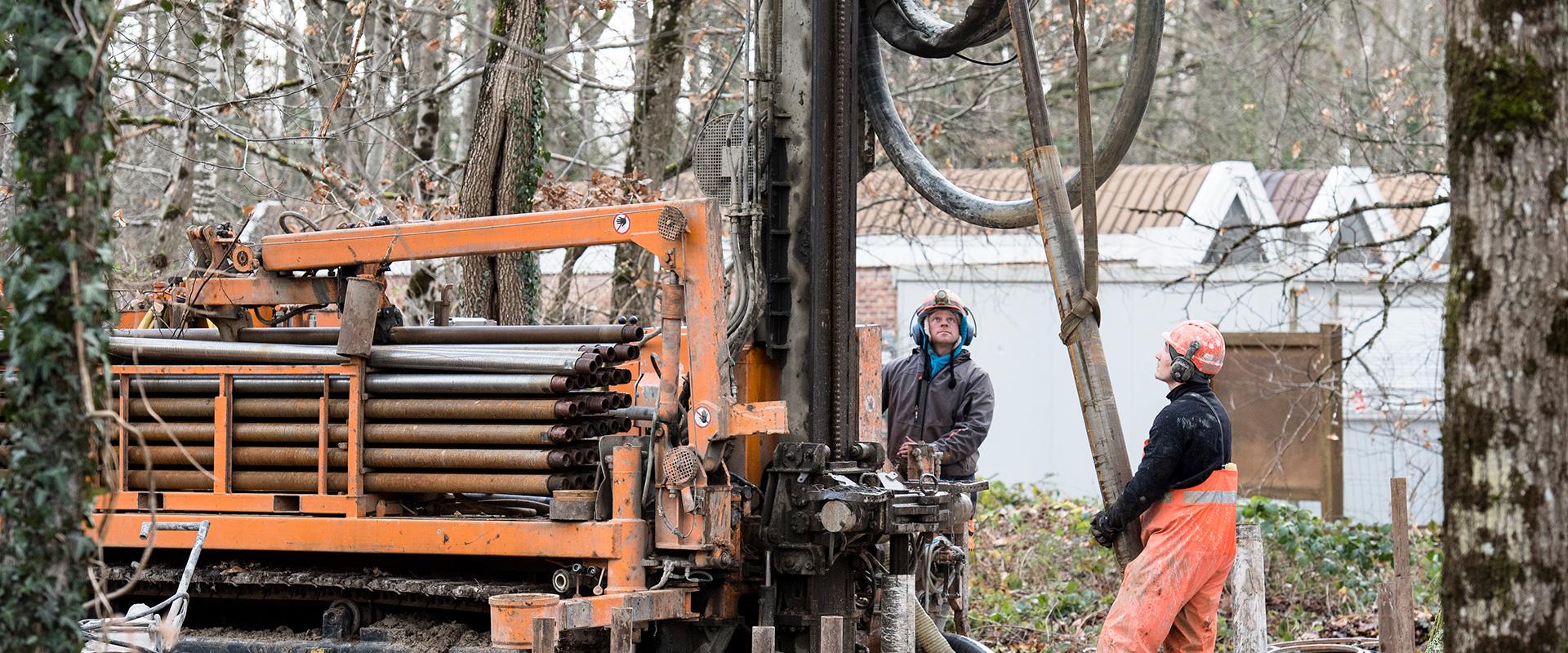
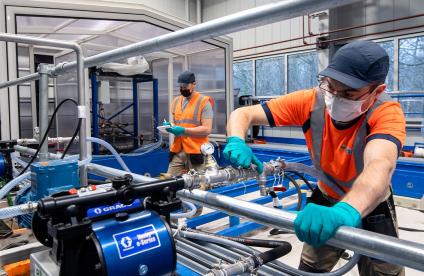
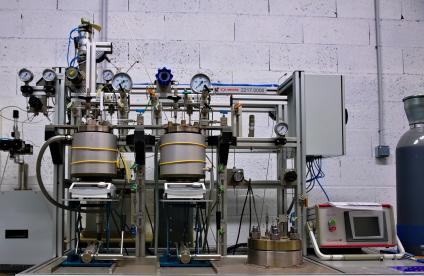
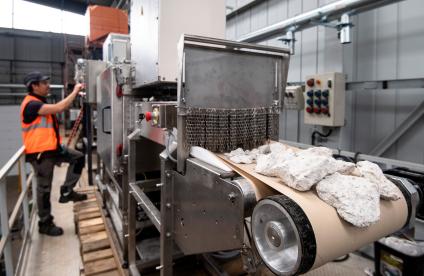
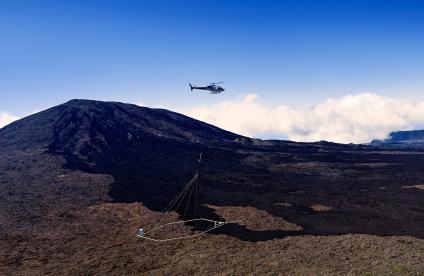
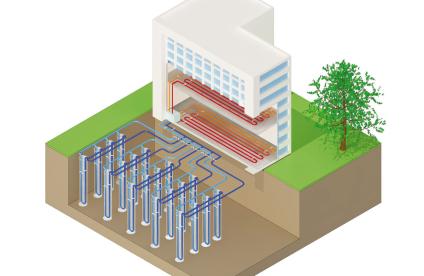
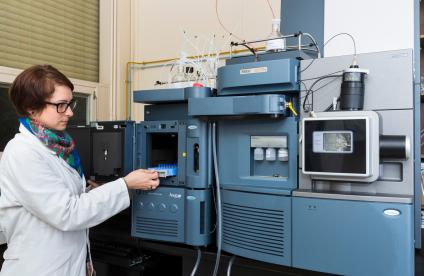
Situated on BRGM's site in Orléans, the platform has been co-financed by the Centre region and ERDF since its construction (Orléans, France, 2010).